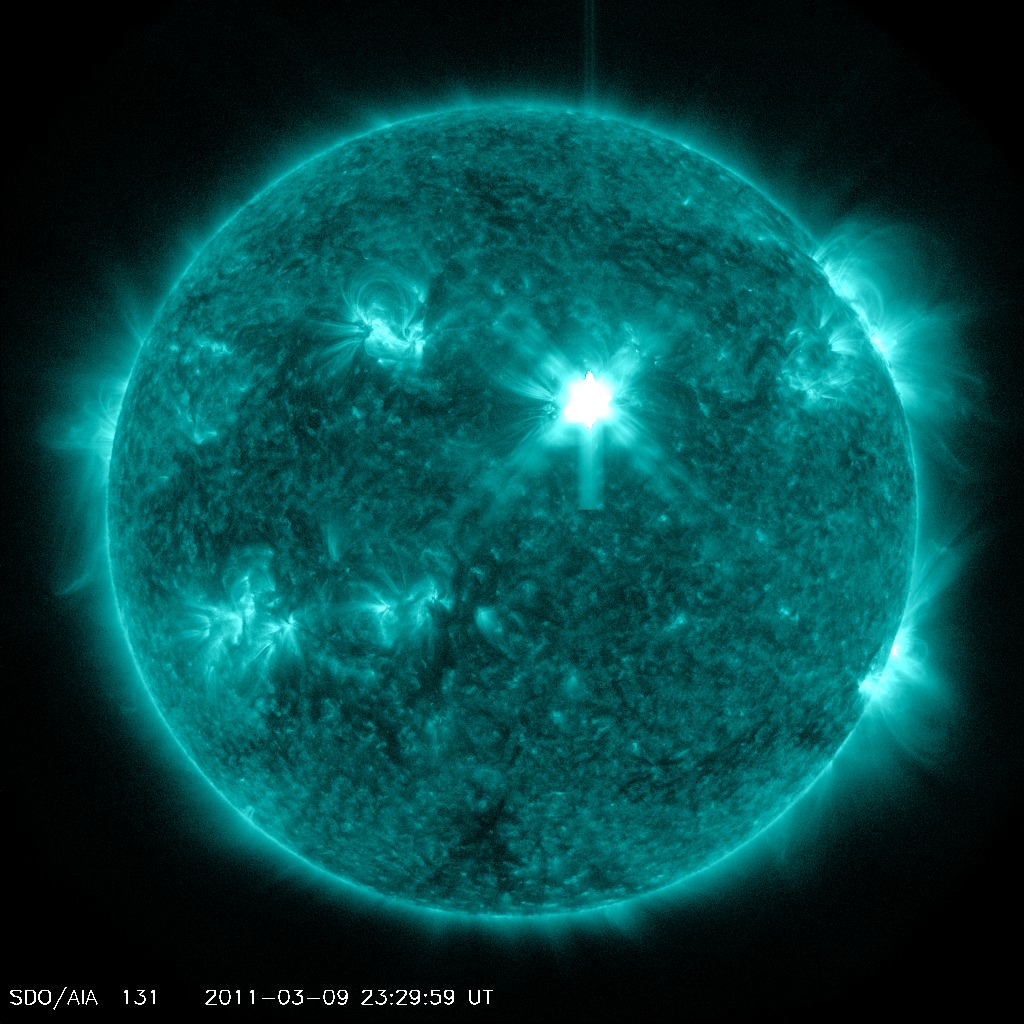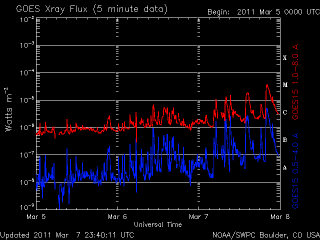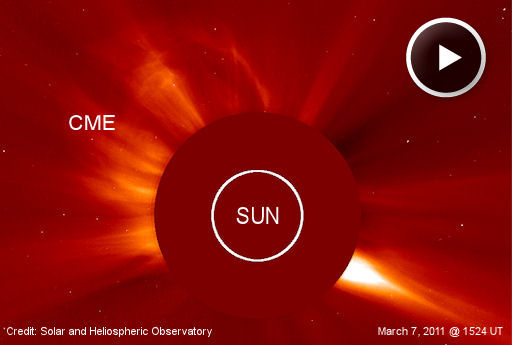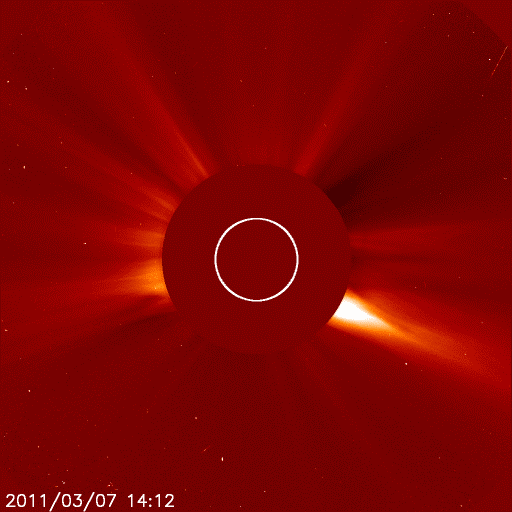March 8, 2011 - Conditions in the D-Region of the Ionosphere have a dramatic effect on High Frequency (HF) communications and Low Frequency (LF) navigation systems like Loran. The global D-Region Absorption Product depicts the D-region at high latitudes where it is driven by particles as well as low latitudes, where photons cause the prompt changes. This product merges all latitudes using appropriate displays, and is useful to customers such as commercial aviation and maritime users.
The Hermanus Space Weather Warning Centre (SWWC) on Sunday said a large solar flare was currently being experienced in South Africa. The solar flare would result in higher radiation levels from the sun.
CCMC CME Arrival Time Prediction
Event Issue Date: 2011-03-08 01:13:58.0 GMT
CME Arrival Time: 2011-03-09 18:53:18.0 GMT
Arival Time Confidence Level: ± 6 hours
Disturbance Duration: 9 hours
Disturbance Duration Confidence Level: ± 8 hours
Magnetopause Standoff Distance: 5.3 Re
Wed, 09 Mar 2011 18:53:18 GMT
Event Issue Date: 2011-03-07 19:41:06.0 GMT
CME Arrival Time: 2011-03-10 19:33:07.0 GMT
Arival Time Confidence Level: ± 6 hours
Disturbance Duration: 12 hours
Disturbance Duration Confidence Level: ± 8 hours
Magnetopause Standoff Distance: 6.2 Re
Thu, 10 Mar 2011 19:33:07 GMT
Under 'CME Arrival Time Prediction'
http://iswa.gsfc.nasa.gov:8080/IswaSystemWebApp/ Long-range communications using high frequency (HF) radio waves (3 - 30 MHz) depend on reflection of the signals in the ionosphere. Radio waves are typically reflected near the peak of the F2 layer (~300 km altitude), but along the path to the F2 peak and back the radio wave signal suffers attenuation due to absorption by the intervening ionosphere.
Absorption is the process by which the energy of radio waves is converted into heat and electromagnetic (EM) noise through interactions between the radio wave, ionospheric electrons, and the neutral atmosphere (for a more extensive description of the absorption process see Davies, 1990). Most of the absorption occurs in the ionospheric D region (50–90 km altitude) where the product of the electron density and the electron-neutral collision frequency attains a maximum. Within this region the neutral density is relatively constant over time, so variations in the local electron density drive the total amount of absorption. The electron density is a function of many parameters and normally varies with local time, latitude, season, and over the solar cycle. These "natural" changes are predictable, and affect absorption only moderately at the lowest HF frequencies. Much more significant changes to the absorption strength are seen as a result of sudden increases of electron density in the D region (the classic short wave fade) due to, for example, solar X-ray flares on the dayside or solar proton precipitation in the polar regions.
Solar X-ray flares have significant emission in the 0.1-0.8 nm [1-8 Å] wavelength range. This is important because these wavelengths ionize the D region, dramatically increasing local electron density, and hence the total EM absorption. The flares, which can last from a few minutes to several hours, are rated C, M, or X according to the 0.1-0.8 nm flux as measured by instruments on the GOES satellites. To qualify as a C-class flare the flux, F, must fall within the range 10-6 ≤ F < 10-5 W·m-2, for M-class 10-5 ≤ F < 10-4 W·m-2, and X-class F ≥ 10-4 W·m-2. In standard notation the letters act as multipliers, for example C3.2 equates to a flux of 3.2 x 10-6 W·m-2. The C, M, and X classification is based on the full-disk X-ray emission from the sun. During periods of high solar activity, such as solar maximum, the background flux may increase to C-class levels for days at a time, even without flare activity. The D region electron density is directly driven by the total X-ray flux regardless of the source, so these periods of high background flux are equally important to radio absorption. Due to geometric effects, D region ionization by solar X-rays is greatest at the sub-solar point, where the sun is directly overhead. The amount of ionization and absorption falls with distance away from the sub-solar point, reaching zero at the day/night terminator. The night-side of the Earth is unaffected.
http://www.swpc.noaa.gov/drap/dregion_absorption_documentation.html 





















